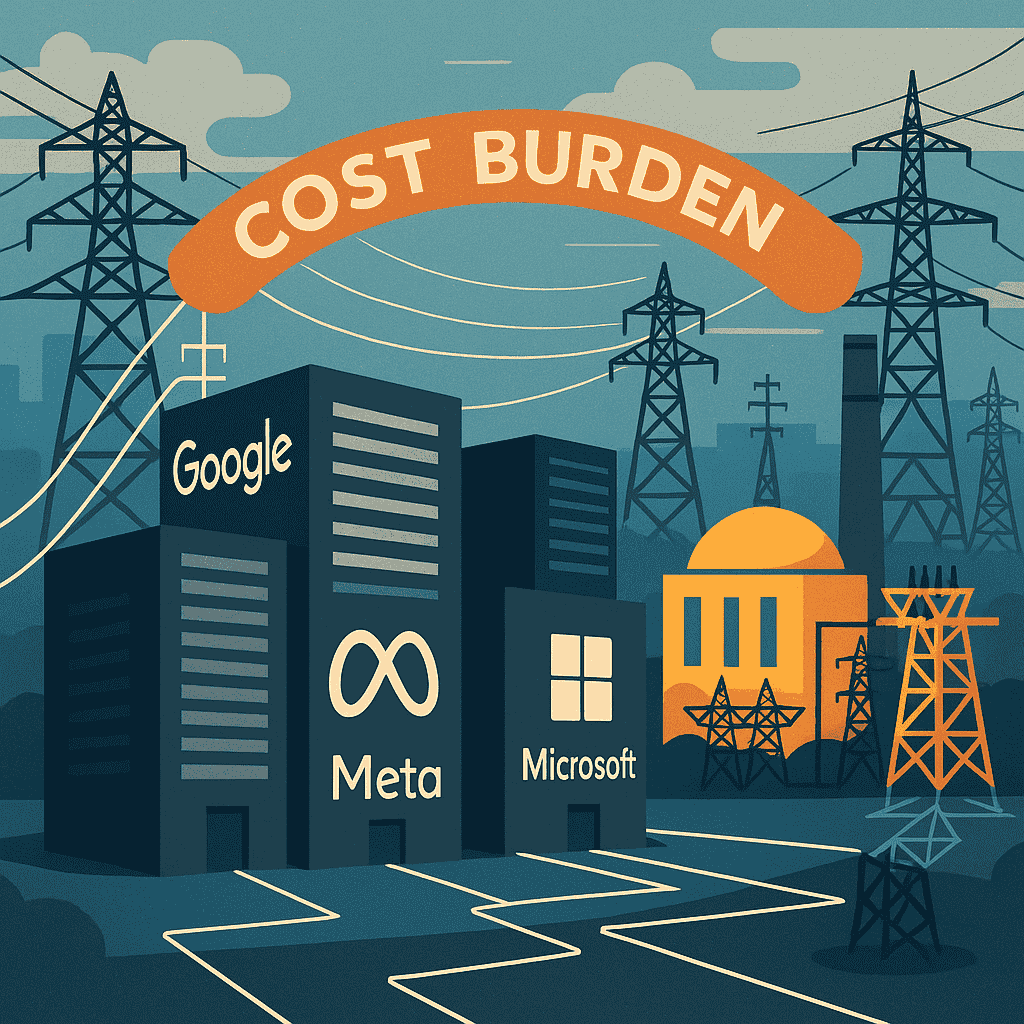
『 ZORO 』
5 months ago
Tech companies building massive AI data centers should pay to power them
Emerging rules in states like Ohio now compel data centers to pay a large share of projected usage upfront. This marks a turning point in how tech companies data center energy costs are accounted for, signaling a much-needed demand for fairness and transparency.

🔍 The Growing Energy Drain from AI Data Centers
Skyrocketing Electricity Use
According to the IEA, electricity demand from global data centers is projected to more than double by 2030, reaching 945 TWh—roughly the current annual consumption of Japan. In the U.S., data centers may account for nearly half of electricity growth by then.
Consumer Ratepayer Impact
In PJM territory, rising energy use from data centers has caused a $9 billion spike in power costs between 2024 and 2025, translating to higher monthly bills for households (≈20 % increases in some regions).
State Moves Toward Accountability
Regulators in Ohio now require data centers to pay 85% of projected energy usage upfront for up to 12 years—ensuring they contribute fairly to grid expansion costs.
🧩 Why Tech Companies Should Pay for Data Center Utilities
Fairness in Cost Sharing
Utility rate systems traditionally socialized infrastructure costs across all users. But with AI centers creating unprecedented loads, expecting local residents to fund expansion for wealthy tech firms raises fairness concerns.
Policy and Climate Considerations
Critics warn that deregulating data center approvals (e.g., under Trump’s AI Plan) threatens environmental safeguards and may lock in fossil-fuel-dependent infrastructure—contradicting clean energy goals.
Grid Reliability & Planning
Data center proliferation has slowed grid interconnections. Virginia’s "data center alley" now faces seven-year wait times for capacity upgrades—and utilities must balance demand growth with stability.
🌍 Expert Perspectives
Ari Peskoe of Harvard Law’s Electricity Law Initiative argues:
“Ratepayers are subsidizing infrastructure built to serve a few trillion-dollar companies.”
Stateline and PPPL reports support new tariff models to prevent shifting costs from utilities to residents.
OpenAI CEO Sam Altman:
“The cost of AI will converge with the cost of energy.” Generating urgency for better energy policy alignment.
📘 Conclusion: Time to Reform Who Pays for AI Power
With tech companies data center energy costs escalating, industry stakeholders must rethink who foots the bill. Policies like upfront tariffs and fair pricing models—seen in Ohio and echoed by experts—highlight a path toward accountability.
As AI demand continues its exponential rise, governments and regulators must ensure that the energy burden doesn’t fall on everyday consumers. To secure both technological progress and energy equity, tech firms must take their rightful share of data center power costs.
Source-



